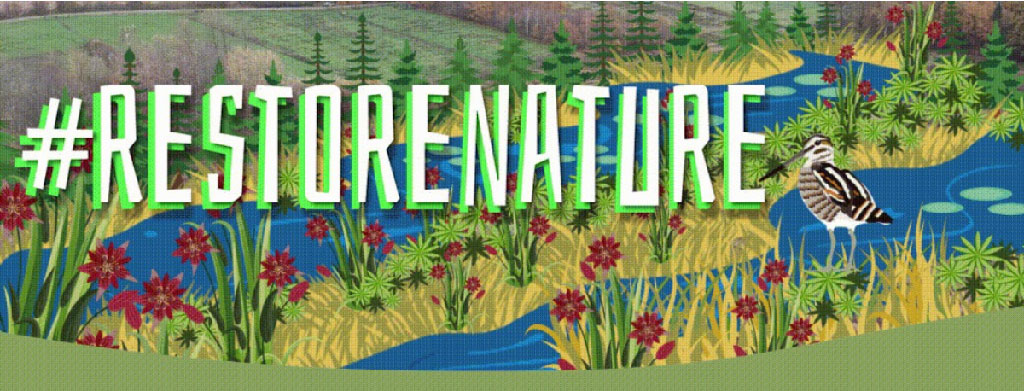Article by Jason Nardi
The European Council failed to find a consensus to move forward the #NatureRestorationLaw
Next to the global heating (aka “climate change”), the loss of biodiversity is part of the global ecological crisis that is a consequence of the destruction propelled by the financialised economic system focused on profit and growth. The European biodiversity is in an alarming state: over 80% of our habitats are in poor condition, and only 23% of species monitored under the EU Nature Directives are in good health. The decline of European biodiversity has reached such an advanced stage that simply conserving and protecting the remaining natural areas will not be sufficient to halt biodiversity loss.
RIPESS Europe is supporting the #RestoreNature campaign. Now more than ever is the moment to make pressure on the candidates for the next European Parliamentary Elections in June 2024. Now more than ever it is essential to demand our politicians a favorable position towards the application of the Nature Restoration Law and vote for those who do.
The outlook for biodiversity and ecosystems is bleak and shows that the current approach is not working. The Parliament resolution called on the Commission to ‘move away from voluntary commitments and to propose an ambitious and inclusive Strategy that sets legally (and, consequently, enforceable) binding targets for the EU and its Member States’.(4)
For this reason, it is fundamental not only to protect the remaining habitats but also to restore what has been lost in order to bring nature back to Europe and build Europe’s resilience. In simple terms, restoration involves bringing more nature and biodiversity back across different ecosystems, from forests, peatlands and agricultural land, to freshwater, marine and urban ecosystems. Restoration is a process of assisting the recovery of an ecosystem that has been degraded, damaged, or destroyed.
In June 2022, a coalition was formed by three of the most important environmental organizations in the world: BirdLife Europe and Central Asia (as part of BirdLife International), The European Environmental Bureau (EEB), and WWF(1). This commission adopted a proposal for a Nature Restoration Law as part of their #RestoreNature campaign. The main objectives of the proposal were to restore damaged ecosystems and bring nature back across Europe, from agricultural land and seas to forests and urban environments. Additionally, it aimed to reduce the use and risk of chemical pesticides by 50% by 2030. The Nature Restoration Law could be a key element of the European Green Deal and the EU Biodiversity Strategy by setting specific, measurable, and enforceable targets toward nature protection and restoration.
The discussion moved to the European Parliament and the Council of the European Union as part of the co-decision process. In June 2023, the European Parliament backed the Nature Restoration Law and approved it on February 27th, 2024. However, the policy needed the final approval from EU countries before it could finally come into effect. Despite the decision made by the European Parliament, and the clear posture of the European citizens to take action against the climate change consequences, the Council of the EU postponed the vote of the Nature Restoration Law since there was no consensus: Nature Restoration Law: Hungary withdrew it’s support together with the Netherlands, Italy, Sweden and Poland, while Austria, Finland and Belgium abstained. To enter into force, the proposal must be supported by at least 55% of the EU countries, representing 65% of the bloc’s population.
A recent study finalized in the framework of the evaluation of the EU biodiversity strategy up to 2020 shows that the EU could not halt the loss of biodiversity between 2011 and 2020(2). It did not meet the voluntary target to restore at least 15% of degraded ecosystems by 2020 (in line with Aichi Target of the Convention on Biological Diversity(3)).
- WWF’s illustration depicts the correlation between people, climate, and nature, highlighting the profound connection among these elements.
- Final Evaluation Report about the EU Biodiversity Strategy
- Aichi Target of the Convention on Biological Diversity
- European Parliament resolution of 16 January 2020 on the 15th meeting of the Conference of Parties (COP15) to the Convention on Biological Diversity (2019/2824(RSP)).














